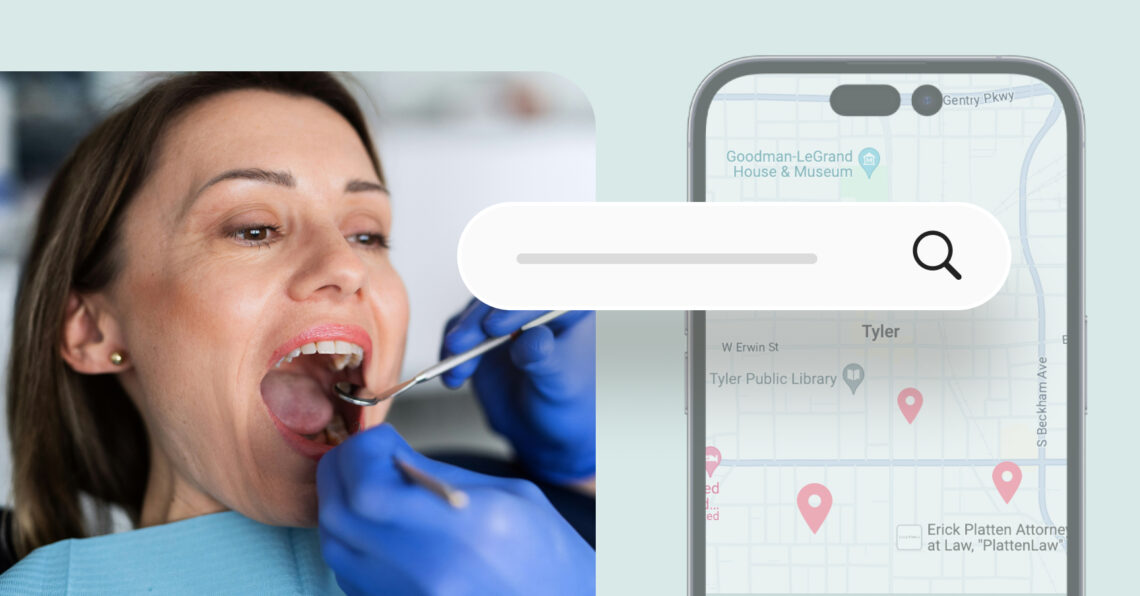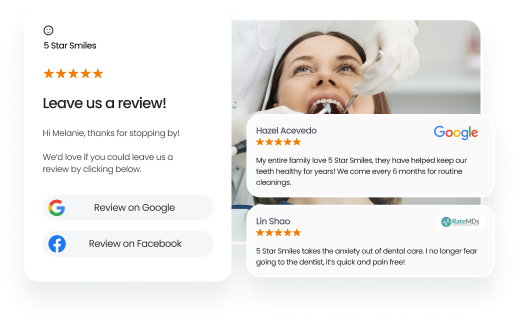When someone looks for braces or Invisalign, they rarely flip through a phone book. Instead, people search on Google, compare clinics in the search results, and choose the practice that feels most trustworthy to them. If your orthodontic practice does not appear near the top, you risk losing potential patients to other providers in your city. This is where orthodontic SEO comes in.
At its core, orthodontic SEO is the process of applying search engine optimization techniques tailored specifically to orthodontists. It helps your clinic appear in local search results, improves SEO rankings, and attracts new patients who are actively looking for orthodontic services.
Unlike paid advertising, which stops delivering leads when the budget is exhausted, SEO establishes a strong online presence through consistent effort and serves as a long-term strategy.
This guide will show you how to use proven seo strategies to make your orthodontic practice stand out. From local SEO tactics to content planning and reputation management, you will learn how to drive more web traffic, improve search rankings, and turn curious visitors into new patients.
Table of contents
- How search intent shapes your orthodontic SEO strategy
- What are the three main pillars of orthodontic SEO?
- How can orthodontists improve on-page and content SEO?
- What technical SEO steps should orthodontic practices take to improve performance?
- How can orthodontic practices improve local SEO and reputation?
- How do you measure ROI and results from orthodontic SEO?
- What common mistakes should orthodontists avoid in SEO?
- How can Birdeye GenAI tools strengthen orthodontic SEO?
- FAQs about orthodontic SEO
- Why is Birdeye the best choice for orthodontic SEO success?
How search intent shapes your orthodontic SEO strategy
When people search for “orthodontic SEO,” they are not just curious about marketing jargon. They want to know how SEO strategies can actually help their orthodontic practice attract new patients and appear in local search results.
Some readers may be orthodontists exploring ways to handle marketing in-house, while others may be clinic managers comparing agencies that specialize in seo for orthodontists.
Search intent usually falls into three categories:
- Educational: Orthodontists want to understand what search engine optimization means for their profession. They may ask about technical SEO, keyword research, or the role of patient reviews in ranking higher.
- Transactional: Clinics are ready to hire support and want clear proof that seo efforts deliver results, speak in terms of more patients.
- Navigational: Some are looking for a trusted provider, such as Birdeye, that can manage both digital marketing and local SEO under one system.
Understanding this intent is crucial because it enables you to create informative content that aligns with what potential readers and patients are searching for. If your blog only talks about theory without showing real applications, you risk missing out on qualified traffic that is ready to book an appointment.
Once intent is clear, the best way to approach orthodontic SEO is by building it on three main pillars that guide every successful campaign.
What are the three main pillars of orthodontic SEO?
Every orthodontic practice seeking to attract new patients through orthodontic SEO requires a clear framework. Think of it as three interconnected pillars that support your overall orthodontist digital marketing strategy: Content, performance, and local visibility.
Without all three, your seo efforts may not deliver the results that practices expect.
1. On-page and content optimization
This pillar focuses on creating pages and blog posts that directly address patient questions. For example, if families want to compare orthodontic treatment options, such as braces, Invisalign, or retainers, your website should clearly explain each one.
Adding before-and-after images, clinician bios, and testimonials helps demonstrate orthodontic care quality.
2. Technical SEO and site health
Search engines reward websites that are fast, secure, and mobile-friendly. A strong technical SEO foundation makes sure your site is easy to crawl and understand. This includes mobile optimization, structured data, and avoiding duplicate content.
These steps make your site more accessible on mobile devices, which is where most people search for nearby clinics.
3. Local SEO and reputation signals
Local SEO ensures your practice appears when patients search for “orthodontist near me.” Optimizing your Google Business Profile, adding high-quality photos, and earning positive reviews can significantly improve search rankings.
Encouraging patients to leave reviews also fosters trust, as it demonstrates that your practice provides reliable patient care.
When these three pillars work together, they create a robust online presence that attracts more patients without relying heavily on paid advertisements.
Now that we’ve outlined the three pillars, let’s dive deeper into the first one, on-page and content SEO, where most practices can start making an immediate impact.
How can orthodontists improve on-page and content SEO?
On-page optimization is where most orthodontic practices can see quick wins. It focuses on creating content that answers common patient questions while guiding readers toward booking a consultation.
Well-structured pages help patients find the answers they need and build confidence in your orthodontic care.
1. Create treatment-specific landing pages
Instead of grouping everything under a single, generic “services” page, create individual pages for each orthodontic treatment.
Pages on Invisalign, braces, and retainers allow you to include orthodontic keywords and showcase before-and-after stories. This format also makes it easier to attract qualified traffic from long-tail keywords, such as “Invisalign cost for teens” or “ceramic braces near me.”
2. Use the right keywords and structure for search engines
Effective keyword research helps you identify the right keywords to target. Organize them into topic clusters: a main treatment page supported by blogs that expand on related topics. For example, a central Invisalign page could be supported by posts about aftercare, pricing, or FAQs.
This approach signals to search engines that your site offers informative content designed for patient inquiries.
3. Add helpful elements to improve engagement
Good content goes beyond text. Many practices see better engagement by adding video explainers, before-and-after galleries, or FAQ sections. Incorporating content marketing tactics, such as blog posts on oral health tips or seasonal promotions, helps attract more patients and keep your site up to date.
When readers stay longer on your site, it increases your site’s chances of ranking higher in search results.
4. Strengthen credibility with trust signals
To make your content stand out, include doctor bios, testimonials, and high-quality photos. Showing the human side of your orthodontist SEO strategy reinforces trust, which is especially important in healthcare.
Answering patient questions clearly demonstrates expertise and makes your site more useful than competitors that post only surface-level information.
With on-page content in place, the next priority is to ensure your website performs well technically, allowing search engines to crawl and rank it properly.
What technical SEO steps should orthodontic practices take to improve performance?
A polished website can be the difference between securing an appointment and missing a valuable opportunity. For an orthodontic practice, strong technical SEO ensures that families comparing braces, Invisalign, or other treatment options can actually find and navigate your site.
Search engines reward orthodontists who deliver a smooth digital experience, which directly impacts seo rankings and the flow of new patients.
Improve speed and mobile experience for orthodontic sites
Most families research orthodontic treatment on mobile devices before they call. If your site loads slowly or is not mobile-friendly, parents may exit and schedule with a competitor. Mobile optimization is critical when patients find you in local search results, and it also signals to search engines that your site prioritizes modern patient care.
Adding fast-loading galleries of before-and-after images can keep visitors engaged while helping you attract more patients.
Organize site architecture around orthodontic services
Clear navigation makes it easy for people searching online to compare braces, Invisalign, or retainers. Structure URLs around orthodontic services (for example: /orthodontics/invisalign/) and include detailed service pages that highlight your expertise.
Google’s algorithm looks for a logical structure, while patients appreciate finding exactly what they need without confusion. This structure helps your seo efforts translate into stronger search results.
Use schema markup and tracking tools
Schema markup highlights orthodontic-specific information for search engines. For example, adding the LocalBusiness, Service, and FAQ schema helps orthodontists display their availability, pricing, and answer patient questions directly in search rankings.
Pair this with tools like Google Analytics to monitor web traffic. By understanding what drives more traffic, orthodontists can refine their digital marketing and attract more potential patients without over-relying on paid advertising.
Secure your site and avoid duplicate content
Families want to know their data is safe when filling out appointment forms. A secure HTTPS site is essential for trust. Duplicate service pages, such as multiple Invisalign pages written the same way, confuse both patients and search engines.
An experienced SEO expert can audit these issues, enhance your online presence, and ensure that your orthodontist SEO strategy remains effective in the long term. Unlike paid ads, these fixes last and make SEO more effective for orthodontists aiming to increase visibility and reach potential customers.
With a technically sound website in place, the next step is to boost your local visibility and establish credibility through reviews and community engagement.
How can orthodontic practices improve local SEO and reputation?
Families often choose an orthodontist based on who appears at the top of local search results. For this reason, building a strong local presence is essential.
When your orthodontic practice appears in the local search results, it not only improves visibility but also builds trust with potential patients who are comparing treatment options, such as braces, Invisalign, or teeth straightening.
Optimize your Google Business Profile
Your Google Business Profile is the cornerstone of local SEO. Make sure your business name, hours, and contact details are accurate across the web. Add high-quality photos of your office and staff to make your practice approachable.
Many practices also use Google posts to share promotions, open house events, or patient success stories. Consistency helps your practice rank higher in the search results.
Use local keywords and directories
Adding local keywords, such as “orthodontist in [city]”, throughout your site helps search engines connect your pages to geographic searches. Submitting your information to dental directories ensures that many practices compete fairly, and it keeps your data up to date.
This consistency across directories improves your online presence.
Encourage and manage patient reviews
Parents trust real experiences. A reliable review generation system makes it simple to encourage patients to leave feedback. Patient reviews enhance trust and demonstrate that your orthodontic care yields tangible results.
Since reviews matter, make sure to respond quickly—whether the feedback is positive or negative. Practices that respond consistently stand out as more attentive to patient inquiries and patient care.
Build reputation beyond search
Local reputation also grows through word of mouth and community presence. Sponsoring school events, collaborating with other dentists, or supporting local families helps reinforce trust. When an orthodontist focuses on both clinical expertise and reputation management, they naturally attract more patients without relying only on paid ads.
Once your local presence and reputation are strong, the next step is to learn how to measure ROI and track whether your orthodontic SEO is truly effective.
How do you measure ROI and results from orthodontic SEO?
For an orthodontic practice, success is not just about appearing in search results. It is about tracking whether your marketing efforts are bringing in new patients. Measuring ROI in orthodontic SEO helps you understand what is working, what needs improvement, and how to invest for long-term growth.
Track organic search traffic and conversions
Tools like Google Analytics reveal how much organic search traffic your website attracts each month. For example, you might see a jump in visits to your Invisalign page after optimizing for relevant keywords. The key is to track how many of those visits turn into consultation requests, not just clicks.
Compare SEO with paid campaigns
Unlike Google Ads or other paid advertising, which stop delivering once the budget ends, SEO compounds over time. While ads can be helpful in capturing patients at the exact moment they are searching, effective SEO keeps your clinic visible in the long run.
This means lower acquisition costs and a more predictable flow of potential patients.
Use clear metrics that matter to orthodontists
The right ROI metrics go beyond page views. Orthodontists should measure:
- Number of consultation requests and patient inquiries from search.
- Growth in web traffic to orthodontic treatment pages.
- How often is the practice ranking higher in local search results?
- Increase in patient reviews and calls from the Google Business Profile.
By tracking these metrics, you can confirm that your seo efforts are producing results—more appointments, stronger online presence, and ultimately, more patients choosing your practice.
Once you know how to measure success, it is equally important to recognize common mistakes that may hold orthodontists back from building a sustainable SEO plan.
What common mistakes should orthodontists avoid in SEO?
Even with the right intentions, many practices fall into traps that limit their growth. Understanding these mistakes can save an orthodontic practice time, money, and lost opportunities with potential patients.
Using generic dental SEO strategies
One of the most significant errors is copying strategies meant for general dental professionals. Orthodontists face unique challenges; patients compare orthodontic care options like braces and Invisalign differently than regular cleanings or checkups. A one-size-fits-all plan ignores the specialized nature of orthodontist marketing.
Overlooking technical and content basics
Some clinics publish thin content or skip optimizing treatment pages. Without effective SEO built on service-specific landing pages, relevant keywords, and helpful answers to patient questions, the site will struggle to be visible in search engines.
Ignoring reputation and reviews
Another common mistake is underestimating the importance of reviews. Failing to maintain a review generation system or not responding to patient reviews can damage credibility. Parents often rely on testimonials and ratings before trusting a provider for their child’s orthodontic treatment.
Relying only on ads without a long-term strategy
Paid campaigns, such as Google Ads, may yield quick results, but they cease the moment the budget is exhausted. Without a long-term strategy grounded in effective SEO, clinics risk losing steady visibility. Balancing ads with content and reputation work ensures sustainability.
By avoiding these pitfalls, orthodontists can enhance their online presence and develop a marketing plan that effectively supports more patients over time.
Now that we have covered mistakes to avoid, let’s look at how Birdeye GenAI tools can help orthodontists simplify SEO and reputation management.
How can Birdeye GenAI tools strengthen orthodontic SEO?
Managing SEO on your own can be overwhelming for any orthodontic practice. Birdeye’s GenAI tools simplify orthodontist marketing by combining SEO, reputation management, and patient engagement into one system. This helps orthodontists spend less time on manual tasks and more time on patient care.
Automate creating content that attracts patients
One of the biggest challenges orthodontists face is consistently creating content. Birdeye GenAI generates blog posts, treatment pages, and FAQs that answer real patient questions. By weaving in relevant keywords and long-tail keywords, it ensures that your practice is visible to families searching for braces, Invisalign, or teeth straightening.
This form of content marketing keeps your site fresh and signals to search engines that your site is up to date.
Boost reputation and reviews at the exact moment
Reputation is critical in healthcare, and Birdeye provides a review generation system that automatically requests feedback after appointments. It encourages patients to leave reviews at the exact moment when they are most satisfied.
Since reviews matter, these responses help your practice build trust and improve seo rankings in local search results.
Simplify local SEO and patient engagement
Birdeye integrates with your Google Business Profile, making it easy to add Google posts, update hours, and share high-quality photos. These updates help your clinic rank higher and appear in search results when people look for orthodontists nearby.
More importantly, the platform turns seo helps into reality by connecting online visibility with actual new patients.
Track success and refine your strategy
With built-in dashboards, Birdeye helps orthodontists monitor organic search traffic, marketing efforts, and results in terms of booked appointments. Instead of juggling multiple tools, you get a clear picture of how your seo strategies are working and how to adjust for more patients.
By combining automation with real-time insights, Birdeye turns effective SEO into a practical system that orthodontists can rely on.
FAQs about orthodontic SEO
Orthodontic SEO is specifically tailored to orthodontic practices, whereas general dental SEO targets a broader range of dental professionals. It highlights orthodontic care, treatments, and reputation signals unique to orthodontists.
With consistent effort, most practices notice improvement in seo rankings and organic search traffic within 3–6 months. Full results may take longer as effective SEO builds over time.
An orthodontist SEO specialist can speed up results by targeting relevant keywords and avoiding common pitfalls. However, orthodontists can also implement basic SEO strategies in-house.
Patient reviews are critical. Since reviews matter, search engines use them as indicators of trust. A strong review generation system that helps encourage patients to leave feedback can boost visibility and attract new patients.
Why is Birdeye the best choice for orthodontic SEO success?
Successful orthodontic SEO depends on three key pillars: strong on-page content, reliable technical SEO, and trusted local SEO signals. When these elements work together, your orthodontic practice not only appears in search results but also earns the trust of potential patients.
Birdeye helps orthodontists tie these pillars into one system.
With built-in tools for tracking performance, Birdeye shows how seo helps deliver measurable ROI. Instead of juggling multiple vendors, Birdeye helps orthodontists connect all the pillars of marketing into one powerful system. Instead of juggling multiple vendors, you get everything in one place:
- Reviews AI automates patient review requests via text or email, boosting your Google ratings and helping you rank higher in local searches.
- Listings AI keeps your practice information consistent across Google Maps, directories, and local search results so families always see accurate details.
- Social AI creates and schedules engaging posts that highlight treatments, patient success stories, or special offers without adding extra workload.
- Messaging AI makes it easy to manage patient inquiries, appointment requests, and follow-ups in a single inbox—improving response times and conversion rates.
- Insights AI shows how SEO and patient engagement efforts are performing, giving orthodontists clear ROI through calls, clicks, and booked appointments.
Start with Birdeye today and see how your orthodontic SEO can power real patient growth.

Originally published









